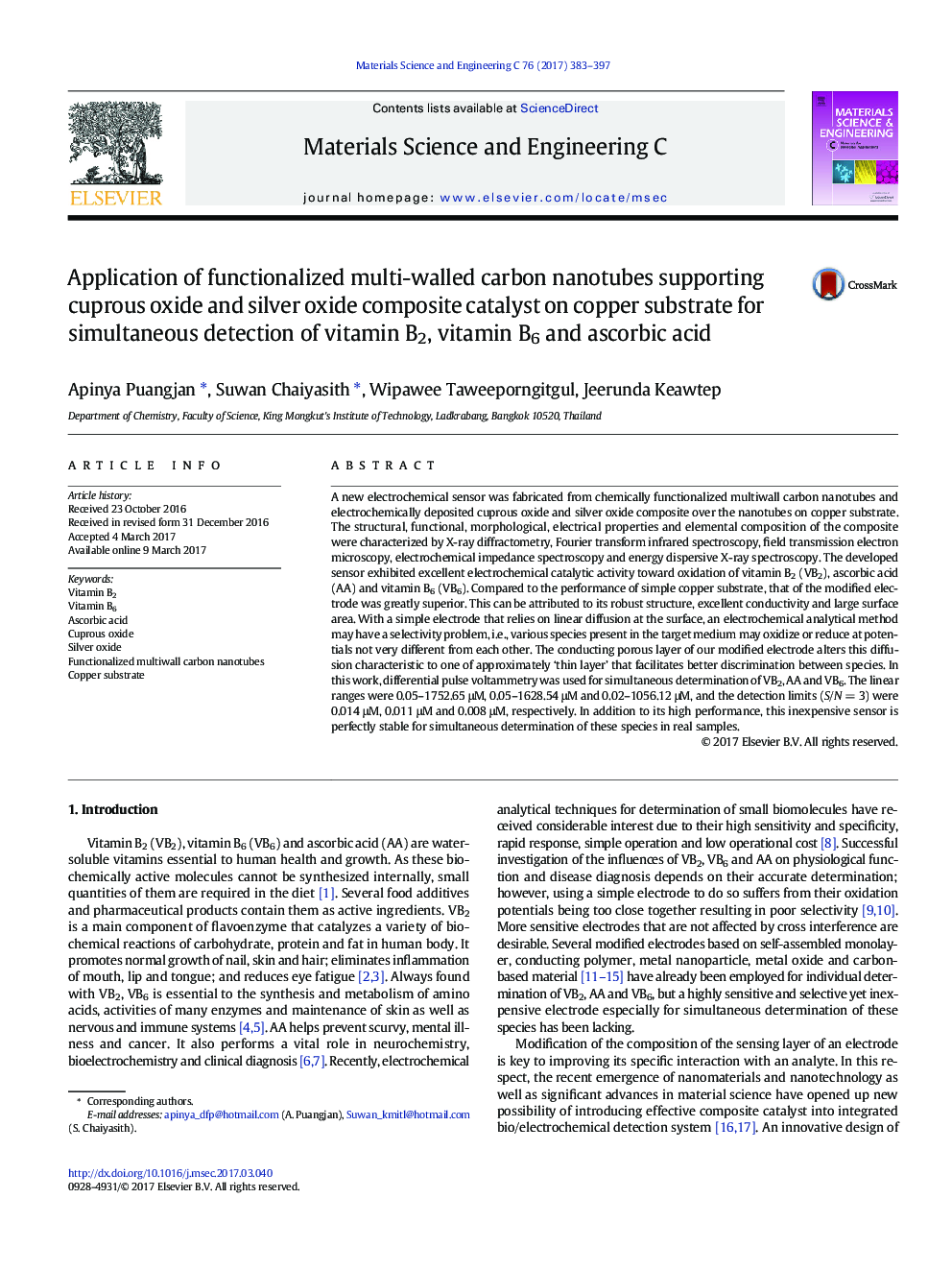| Article ID | Journal | Published Year | Pages | File Type |
|---|---|---|---|---|
| 5435130 | Materials Science and Engineering: C | 2017 | 15 Pages |
â¢A novel combination of Æ-MWCNTs-Cu2O-Ag2O composite with copper substrate.â¢The composite improved the electrochemical sensitivity of the copper substrate.â¢The proposed electrode was used for simultaneous detection of VB2, VB6 and AA.â¢The electrode exhibited superior sensitivity and fast response time.â¢Successfully applied to simultaneous detection of VB2, VB6 and AA in real samples.â¢The results of this electrochemical method were positively confirmed by HPLC.
A new electrochemical sensor was fabricated from chemically functionalized multiwall carbon nanotubes and electrochemically deposited cuprous oxide and silver oxide composite over the nanotubes on copper substrate. The structural, functional, morphological, electrical properties and elemental composition of the composite were characterized by X-ray diffractometry, Fourier transform infrared spectroscopy, field transmission electron microscopy, electrochemical impedance spectroscopy and energy dispersive X-ray spectroscopy. The developed sensor exhibited excellent electrochemical catalytic activity toward oxidation of vitamin B2 (VB2), ascorbic acid (AA) and vitamin B6 (VB6). Compared to the performance of simple copper substrate, that of the modified electrode was greatly superior. This can be attributed to its robust structure, excellent conductivity and large surface area. With a simple electrode that relies on linear diffusion at the surface, an electrochemical analytical method may have a selectivity problem, i.e., various species present in the target medium may oxidize or reduce at potentials not very different from each other. The conducting porous layer of our modified electrode alters this diffusion characteristic to one of approximately 'thin layer' that facilitates better discrimination between species. In this work, differential pulse voltammetry was used for simultaneous determination of VB2, AA and VB6. The linear ranges were 0.05-1752.65 μM, 0.05-1628.54 μM and 0.02-1056.12 μM, and the detection limits (S/N = 3) were 0.014 μM, 0.011 μM and 0.008 μM, respectively. In addition to its high performance, this inexpensive sensor is perfectly stable for simultaneous determination of these species in real samples.
Graphical abstractDownload high-res image (98KB)Download full-size image
